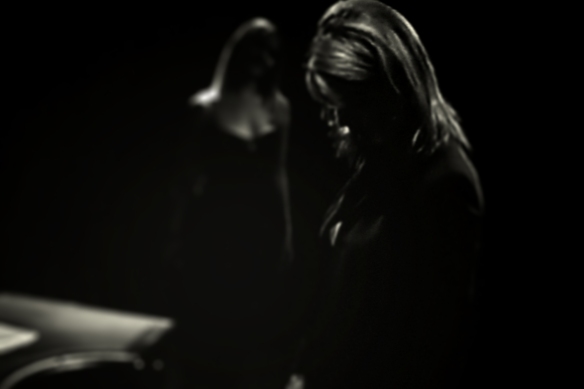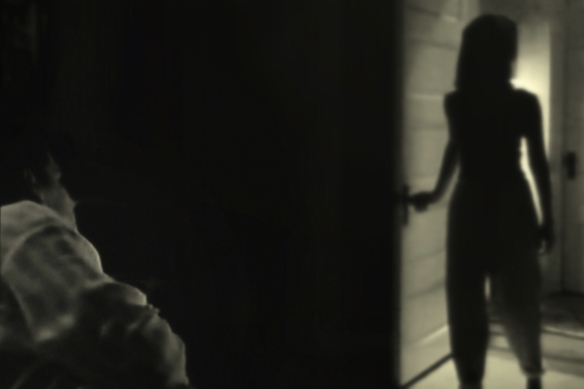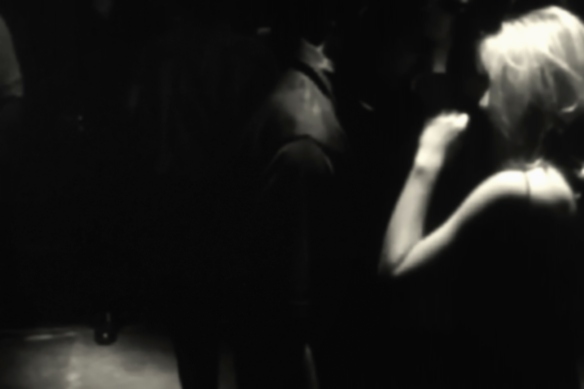Whenever somebody asks me about ‘my work’ I automatically assume they’re talking about writing, not photography (although it now occurs to me that I almost never discuss writing on this blog — which is probably something I’d think about if I was even remotely self-reflective). I don’t think of photography as ‘my work.’ I don’t even think about it in terms of ‘my photography.’ I think about it as ‘the photographs I shoot,’ which is a subtle but meaningful distinction. At least it’s meaningful to me.
Don’t get me wrong; I take photography seriously. I just don’t take myself seriously as a photographer. So it feels odd to me to write about the photographs I shoot. But a few days ago I mentioned I received an email in which I was asked the following questions:
I guess what I’m asking is how do you develop a personal photography project? Do you just pick a thing and start taking picture of it? Do you make up rules or guidelines before you start? How do you start a photography project?
I decided to take the questions seriously and try to answer them — at least insofar as the three photo series I’ve included on this site. Last time I talked about the Traffic Signals series. Today I’m going to explain the origins of the Faux Life series.

My blindness to what was going on, led me to act by them in a way that I must always be ashamed of, and I was very foolishly tempted to say and do many things which may well lay me open to unpleasant conjectures….
I blame Richard Prince. If you’re not familiar with Prince, he was the first photographer whose work sold for more than a million dollars. What made that amount even more staggering is his work was also the work of commercial photographer Sam Abell. Does that sound confusing? That’s because it is.
Sam Abell photographed the famous Marlboro Man advertisements. What Richard Prince did was re-photograph some of those advertising images. He removed the text, printed them very large, then presented them as a comment on American culture.
Some folks would call that theft; Prince called it appropriation art. The idea is that by removing the image from its original context, new layers of meaning can be attached to the work. Abell’s original photograph was intended to create an association between Marlboro cigarettes and the robust life of a manly cowboy living and working in an idealized vision of the Old West. It was, in effect, a lie. A double lie, in fact. It not only associated smoking with a healthy lifestyle, it also invoked a nostalgic vision of an American West that never really existed. It was a lie used to sell cigarettes.
Richard Prince removed the Marlboro Man from that original context. In doing so, he gave the photograph a radically different interpretation and a different meaning. It became a comment on commercialism. The viewer has a different experience when looking at the re-photographed photograph — he’s no longer being sold a product, he’s being introduced to the idea of using romance as a marketing tool. Prince would argue that this, in effect, makes it a different photograph.

The key was in the door, and she had a strange fancy to look into it; not, however, with the smallest expectation of finding anything, but it was so very odd, after what Henry had said.
That concept — that simply by shifting the context of an image it can be turned into an entirely new image –fascinated me. It still does, in fact. I’m appalled that Prince made millions of dollars off Abell’s work, but I have to admit that even though the photographs of Abell and Prince are essentially the same, they DO have a different meaning — and Prince’s image is more interesting.

Anxious and uneasy, the period which passed in the drawing-room, before the gentlemen came, was wearisome and dull to a degree that almost made her uncivil.
I decided I wanted to play around with the concept of appropriation art. By coincidence, as I was knocking around ideas for an appropriation project, Buffy the Vampire Slayer came on television. I’m a long-time, devoted fan of the Buffy television series. It occurred to me that Joss Whedon had, in effect, appropriated the vampire concept and turned it on its head by shifting the role of vampire slayer from the traditional virile and sober-minded male to a bubble-headed Valley Girl cheerleader. The television show used the tropes of vampire movies to examine the life crises of high school students.

He had suffered, and he had learned to think: two advantages that he had never known before; and the self-reproach arising from the deplorable event in Wimpole Street, to which he felt himself accessory by all the dangerous intimacy of his unjustifiable theatre, made an impression on his mind….
So I decided to steal Buffy. I mean appropriate Buffy. But I discovered it wasn’t enough to extract one particular moment from a television episode. It wasn’t enough to shift color photography to black and white. It wasn’t enough to manipulate the shadows. That certainly changed the image, but it didn’t really add any meaning to the image.
It needed something else. And by still another coincidence, I was engaged in an ongoing discussion with a friend about the novels of Jane Austen. I was arguing that you could read her novels as detective stories in which the modern notion of crime was replaced with social deviance. Murder was replaced by incivility. Jane Austen’s protagonists were all keen observers of life, all had a detective’s eye toward detail.
So there it was. I would steal an out-of-context moment from Buffy (or the spin-off series of Angel), then I would steal an out-of-context line from a Jane Austen novel, after which I’d combine them with the intent of creating something altogether new. I hoped to give a new meaning to both the image and the text.
It was a lot harder than I thought it would be. I wanted to catch moments of visual drama. I wanted there to be some compositional tension within the frame. But I also wanted to be sure the faces of the characters were obscured. If the viewer sees Buffy, I reasoned, then the photograph becomes all about Buffy. There was, as you can imagine, a great deal of Photoshop work involved.
Once I had the photograph, I needed to search the novels of Jane Austen to find an appropriate line. It had to be a line that, when associated with the photograph, would convey a completely different meaning than it did in the story. And yet the line still had to be congruous with the image.
It took a lot of searching. Jane Austen did not write short novels.
There are now just over thirty photographs in the series. That seems like a nice size for a project. I keep thinking about returning to the series and adding new images, but it would just be for my own amusement. As an experiment in appropriation art, the series is complete. I did what I wanted to do, I’ve learned what I wanted to learn.
The project convinced me that appropriation is a valid art technique. It’s certainly ethically dodgy if the appropriator is making buttloads of coin off another person’s original work. But the technique of appropriation itself has artistic integrity.
Or at least that’s what I tell myself.




I appreciate that you have no intentions of making buttloads of money from these images. As for Prince, I still despise his obvious intent to make buttloads of money without significantly changing the image. The working rule of thumb that I learned as an illustrator who uses reference images at times has been that if you alter the original image to the extent that people will not ‘see’ the original image in your work, it’s not infringing in a meaningful way on the original copyright, though of course there are gray areas and exceptions and complicating factors. But that’s it basically. I don’t think anyone looking at your manipulated images here would realize that the original images were from Buffy. You’ve taken your own idea with the found images and clearly created new art from what you started with. And that’s a huge difference between what you’ve done and what Prince did. His work may have been a spark that got you thinking, but you’ve taken that spark and evolved the idea much further than Prince ever tried to do. I think the combination of your manipulated images with the out-of-context Austin quotes is an interesting twist and somehow so uniquely something that only you would do. Which makes the project unique and valuable as current commentary on this world, this society, that we’re living in now.
LikeLike
Yeah, I agree that Prince’s financial approach is ethically reprehensible. He’s made serious amounts of money by rephotographing other people’s photographs, while they get nothing for their original work. Does it matter that the original work was created for a different purpose? Yeah, maybe. Still, I guess I think there’s sometimes more to it than that, though. I recall when Dali would sign paintings made by other people and announce that it was now a Dali. Nobody was offended by that; it was seen as ‘cheeky’.
Of course, Dali was a surrealist whereas Prince is …whatever he is. In the end, I suppose, I defend Prince largely for the same reason I defended criminals when I was a criminal defense investigator. You have to defend the underlying principle even if the person relying on the principle is a crook.
LikeLike
I would however argue that whatever we do is stealing an image from somewhere. Even photographing what we see is stealing an image from something or someone. Capitalism, copyright, ownership is something that Prince is commenting on with his appropriation.
Even selling it for money and receiving money is a commentary on this because it is a commentary of the foolishness of ownership.
Intellectual and artistic property can often be a ruse in many senses, especially in the thought that we can own meaning and that meaning is contained within copyright. It is only set up this way due to the society and values that we live in and Prince points this out with his photography and artistic work. Where part of his work was commenting on bikers advertising their bikes and their girlfriends to show them off as property directly addresses the idea of property and is a play on that different meaning, especially because with every moment meaning changes for each of us and we can never reach the same experience or meaning between any other.
LikeLike
I love the fact that if I am in the street scratching my nose because it’s itchy, and you photograph it, you have an original photograph. If I’m in the same street scratching my nose as a piece of performance art, and you photograph it, you are appropriating my work. And the two photos would be identical. So the validity of the artwork depends on the mindset of the subject?
And the validity of artwork also depends on the mindset of the artist? If they appropriate work for purely artistic reasons it’s OK, but if they produce exactly the same output but their mindset was focussed on making money, it’s NOT OK?
Art is the best.
LikeLiked by 1 person
First, an apology for not noticing this when you wrote it. But second, and much more importantly, I think your response in itself demonstrates the validity of appropriation as an approach.
When you snatch a work and remove it from its original context, you sort of liberate it. Not only can that allow you to create a ‘new’ work, but it calls the entire notion of originality into question. For example, Sam Abell — the guy who photographed the original Marlboro Man — didn’t create the concept of the cowboy as a symbol of fiercely independent masculinity. That notion has been around since…well, since there were cowboys. Hell, it’s been around since there were Mongol warriors. What Abell did, at an art director’s suggestion, was interpret that notion in a way that would attract men to a brand of cigarettes. He was, in effect, appropriating the concept, which Prince went on to re-appropriate.
The whole business gets vastly more complex, more interesting, more frustrating.
LikeLike
Yeah, nice. When you ‘liberate’ a piece of art, even if that just means presenting it to a new audience, you change it’s meaning. So the validity of a piece of art depends not only on the mindset of the subject and the original artist, but on the viewer as well. If someone takes a photo of workers building a bridge, to a viewer who is a bridge worker it can be a factual photo of their life (and so not art), while to anyone else it can be an illustration of the struggle of the working classes (and so art). So if you take a straight documentary photo and place it in a gallery, you elevate its status, although you haven’t changed it at all. But in the process of selecting that particular photo you have exercised your artistry, and so promoted it to art.
LikeLike
Reblogged this on sideshowtog.
LikeLike
Firstly, love what you did with combining the stills and prose.
Regarding the topic, I don’t think there’s a fine line between theft and appropriation art, rather a large, difficult to navigate swampland of intent (of the artist, subject, and patron), money (financial compensation, valuation, and ownership), law (fair use, rights to use and public domain), and recognition, fame, notoriety… Similar commentary applies with other properties one originates, develops, creates or produces.
Cheers
LikeLiked by 1 person
Pingback: All things graphics with Pure Data
Pingback: Curating the Machine